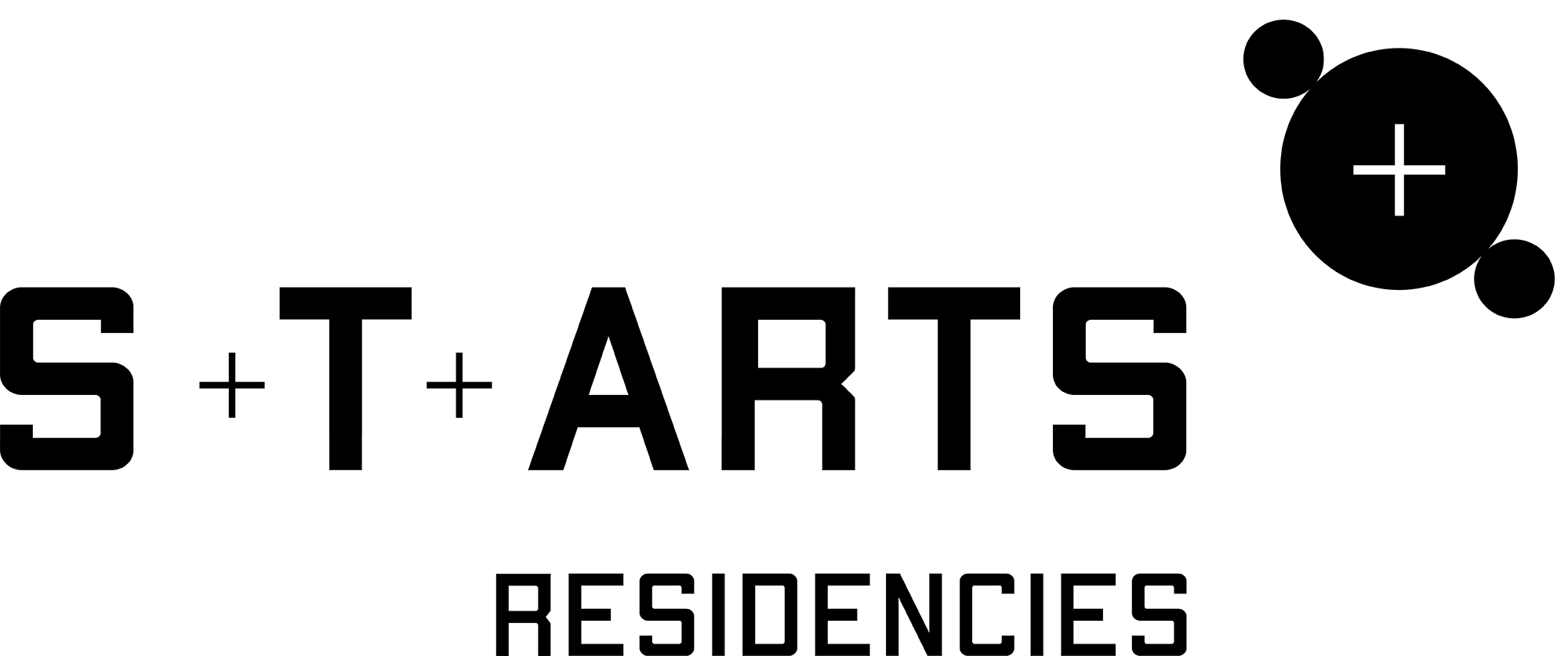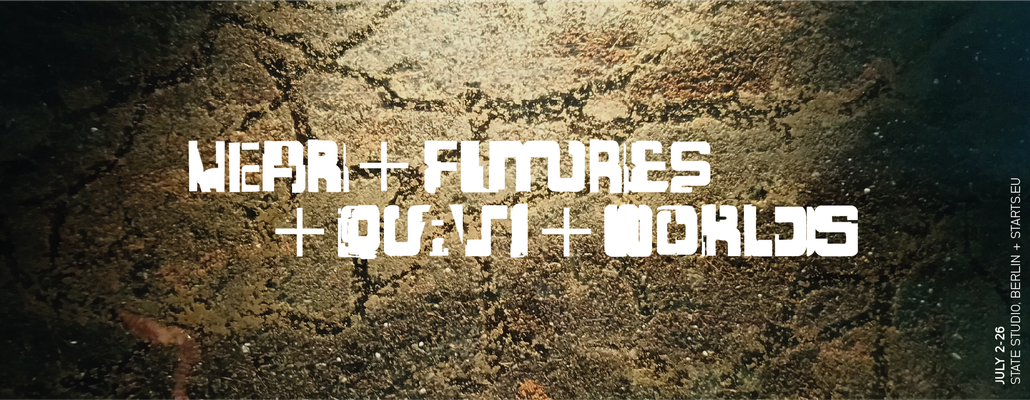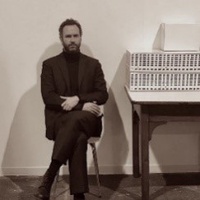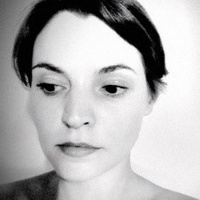10 a.m. - 6 p.m.
NEAR + FUTURES + QUASI + WORLDS: A S+T+ARTS EXHIBITION
STATE Studio, Berlin
July 2 - 26 2020
Since its launch in 2015 as an initiative of the European Commission, S+T+ARTS, innovation at the nexus of Science, Technology, and the ARTS, has promoted the integration of artistic practices with advanced research and innovation. It has done so via the annual STARTS prize honouring successful collaboration of artists and engineers, STARTS residencies of artists in technology institutions and STARTS lighthouse pilots that have made artists an integral part of their research.
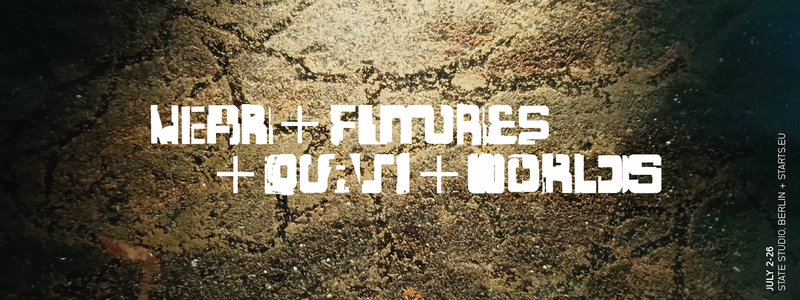
NEAR + FUTURES + QUASI + WORLDS aims to emphasize the vital role that collaboration in scientific, technological, and artistic domains can play in furthering contemporary research and integrative forms of cutting-edge artistic creation. In its first iteration at STATE Studio in Berlin in July 2020, NEAR + FUTURES + QUASI + WORLDS will feature a selection of artworks, objects, and documents highlighting the manifold scope of S+T+ARTS actors and activities—STARTS Prize winners or works of artists from STARTS residencies and STARTS lighthouses.
Transcending punctual interaction, shared languages of experimentation emerge in common research environments. Every work in the show is a fragment of a newly organized system, a piece of a world-like sphere not fully formed or complete or fully real, but steadily emerging. By way of their visionary capacity and structural insight, these works place the viewer on the verge of reality and demonstrate the elasticity of limits. If the new is shaped by research and informed by experimentation, the selected projects readily approach what is or could be about to happen.
They posit thresholds—unexpected expressions of what is to come. As capsules of an unfinished, truncated, propositional tomorrow, these works are an almost-here. In the form of robotic sculptures, 3D prints, bas-reliefs, digital animations, film, sound, and light work, they make potentiality manifest and claim the conceptual space of what may be close to happening.
The exhibition is curated by Manuel Cirauqui with the collaboration of Silvana Fiorese, and includes work by the following artists: Refik Anadol, Ralf Baecker, Evelina Domnich and Dmitry Gelfand, Félicie d’Estienne d’Orves, Forensic Architecture, Iris van Herpen, Julia Koerner, So Kanno, Egor Kraft, Kasia Molga & Robin Rimbaud aka Scanner, and Etsuko Yakushimaru.NEAR + FUTURES + QUASI + WORLDS thus explores phenomena of reciprocal influence and cross-pollination between technology, science, and the arts, all at work in each of the selected projects, to open up new modalities for innovation and creation in the foundational spirit of S+T+ARTS.
Curatorial project structure
Several thematic blocks structure the curatorial development of NEAR + FUTURES + QUASI + WORLDS, each of them functioning like a specific module that conceptually overlaps with the others and affords a multiplicity of readings for the whole.
Through the notion of statuary, as a crucial concept in Western art history with many resonances beyond, NEAR + FUTURES + QUASI + WORLDS confronts classicism as it reappears, mutates, decomposes, and re-emerges in research-based art and collaborations with advanced technology today. The forms of statuary are not necessarily anthropomorphic or figurative, even though they may surround, expand, or replace the volume of generic human bodies. Rather, these forms seem to be the result of certain attitudes of material—uses of the pedestal, mutations of the torso, mannequin-like arrangements, abstract robotic dances, colourful synthetic protrusions. Since Antiquity, statues emblematize body qualities and highlight the dialectics between artifacts and living beings, representation, and flesh. So Kanno’s Senseless Drawing Bot, Egor Kraft’s Content Aware Studies, Iris van Herpen’s Magnetic Motion couture collection, Julia Koerner’s Digital Vogue research pushing toward an artificial fur or butterfly wing velvet… These works invite us to think at the intersection of historical time and multi-faceted, post-human thingness. They project new encodings of social memory, monumentality, corporeality, agency, and myth.
Unexpected tensions between time, timelessness, technology, and bare construction also appear in radically abstract kinetic devices such as Ralf Baecker’s Putting the Pieces Back Together Again, Evelina Domnich and Dimity Gelfand’s Hilbert Hotel, Refik Anadol’s Melting Memories, and Félicie d’Estienne d’Orves’s Martian Sun Series. In their four-dimensionality, these art works describe the apparently rhythmic patterns that structure autonomous worlds we encounter in fragments. There is a ticking, sliding, cyclical otherness in each of these art works, where the machine is a landscape and the landscape a machine. Also, at work in these worlds in progress is the merging of micro and macro scales. Like probes of exploded geographies, they inevitably make us think of enigmatic snow globes. In By the Code of Soil: (de)Compositions, by Kasia Molga & Scanner, and I’m Humanity by Etsuko Yakushimaru, the living appears as a generative element in the artwork that permeates the world beyond. Not coincidentally, sound is a key aspect of both these projects—as a haunting manifestation of life’s substrate as well as a translation of the world into genetic code. Meanwhile, sound fragments emerge in Forensic Architecture’s The Murder of Pavlos Fyssas to reveal the disturbing evidence of a political crime in contemporary Greece, the birthplace of classicism and the political laboratory of European post-rescue culture. Again, issues of monumentality, historicity, data landscape, re-emerge in the world-in-progress of concealed facts.
Each of these connected levels addresses a facet of the S+T+ARTS collaborative ecosystem without exhausting it. Modularity will allow a number of potential iterations, additions, and variations of the exhibition farther on, while central issues already appear in the project’s iteration at STATE Studio in Berlin. Additional sections are likely to emerge in future iterations of this curatorial endeavour, in order to shed light on other aspects of S+T+ARTS as a collaborative ecosystem.
Curatorial team
|
|
Artists´ biographies along with selected artworks of the exhibition
Find all information here
Exhibition Location:
STATE Studio
Hauptstr. 3, 10827 Berlin
https//state-studio.com
hello@state-studio.com
+49 30 5527 9411
Socials (Insta/Facebook/Twitter): @statestudiobln
Exhibition opening days and hours:
Tue–Fri: 12:00 - 19:00
Sat/Sun 12:00 - 17:00
